Russian cinema has a rich history, with many classic films that have been internationally acclaimed for their innovative storytelling, unique perspectives, and powerful visuals.
From the early Soviet era to contemporary times, Russian filmmakers have produced a wealth of cinematic gems that offer insights into the country’s history, culture, and society.
Some of the most notable names in Russian cinema include Sergei Eisenstein, Andrei Tarkovsky, and Aleksandr Sokurov, who have all left their mark on the industry with their groundbreaking films.
Russian cinema is known for its poetic realism, psychological depth, and strong political and social commentary, which has made it a favorite among cinephiles around the world.
Best Russian Movies
Whether you’re a fan of drama, romance, or historical epics, Russian cinema has something to offer for everyone. From the silent era classics like “Battleship Potemkin” to the contemporary masterpieces like “Leviathan,” Russian cinema has a diverse range of films that have left an indelible mark on the world of cinema.
1. Battleship Potemkin (1925)
“Battleship Potemkin” is a silent film directed by Sergei Eisenstein and released in 1925. The movie is based on the true story of the mutiny on the Russian battleship Potemkin in 1905, and is considered a masterpiece of Soviet and world cinema.
The film is famous for its use of innovative techniques such as montage, which involves the juxtaposition of different shots to create meaning and emotion. It also features a powerful and dynamic score by composer Edmund Meisel, which enhances the impact of the visuals.
The movie tells the story of the mutiny on the Potemkin, and the subsequent suppression of the rebellion by the authorities. The film’s most famous scene is the Odessa Steps sequence, which depicts the brutal massacre of innocent civilians by the Tsarist regime.
“Battleship Potemkin” is a powerful and influential film that had a significant impact on the development of cinema as an art form. It is renowned for its groundbreaking use of film language and its bold political message, which celebrates the struggle of the working class against oppression and injustice.
Overall, “Battleship Potemkin” is a classic of world cinema that continues to be studied and celebrated today. Its impact on the history of cinema is immeasurable, and it remains a testament to the power of film as a medium for social and political commentary.
- Factory sealed DVD
- Sergei Eisenstein (Director)
- English (Publication Language)
- Audience Rating: NR (Not Rated)
2. Man With A Movie Camera (1929)
Man With A Movie Camera is a 1929 Soviet silent documentary film directed by Dziga Vertov. The film is a groundbreaking work in the history of cinema, known for its innovative techniques, visual style, and experimental approach to documentary filmmaking.
Man With A Movie Camera is a non-narrative film that presents a montage of images and scenes from daily life in the Soviet Union, including shots of the city, people at work, leisure, and in motion. The film is unique in its use of avant-garde techniques such as rapid editing, double exposures, and split screens, which were groundbreaking at the time.
The film has been praised for its technical achievements and its artistic vision, and is considered a landmark in the history of documentary filmmaking. It has influenced generations of filmmakers, and is still widely studied and celebrated for its contribution to cinema. Man With A Movie Camera is a testament to the power of cinema as an art form and a tool for exploring the world around us.
- Mikhail Kaufman (Actor)
- Dziga Vertov (Director) - Dziga Vertov (Writer)
- English (Subtitle)
- English (Publication Language)
- Audience Rating: NR (Not Rated)
3. Earth (1930)
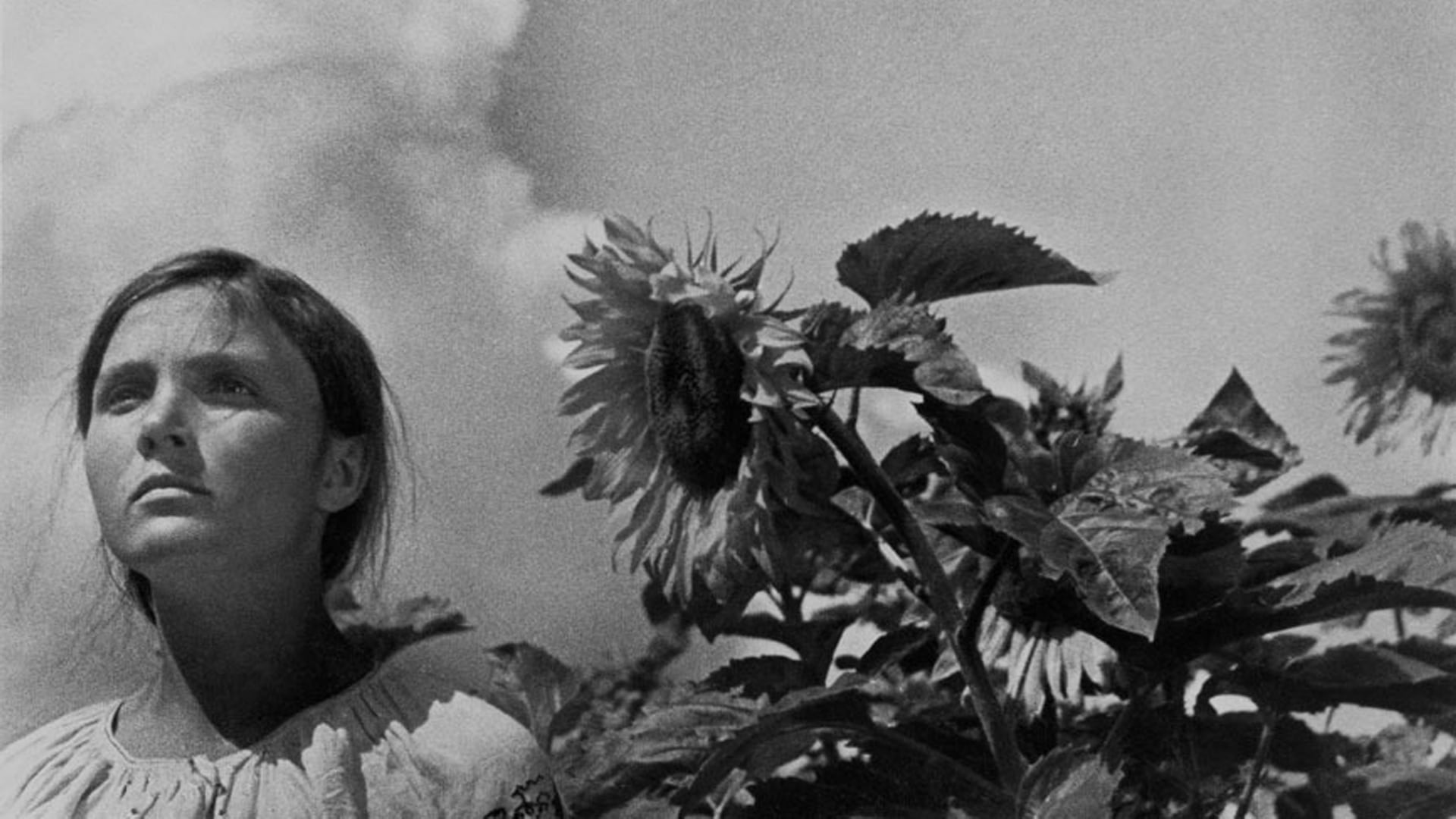
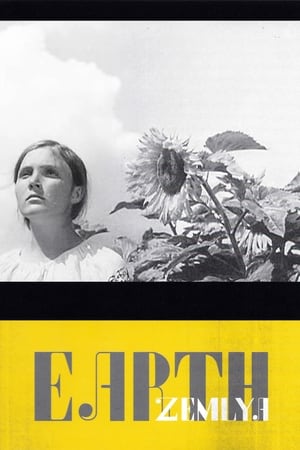
Earth
1930 • 1h 24min • ★ 6.72/10 • Soviet Union
Directed by: Oleksandr Dovzhenko
Cast: Stepan Shkurat, Semen Svashenko, Yuliya Solntseva, Yelena Maksimova, Mykola Nademskyi
Vasyl, a member of the Komsomol, with the help of a local party organization, gets a tractor and plows private boundaries "on kulak fields". However, this enthusiasm will cost him dearly.
“Earth” is a silent film directed by Indian filmmaker, writer, and actor, Himanshu Rai. The movie was released in 1930 and is based on the novel “The Mother” by Russian author Maxim Gorky.
The film is set in a small Indian village during the period of British rule and follows the lives of several characters from different religious and social backgrounds. The story is centered around the friendship between a young Hindu woman named Sita and a Muslim man named Abdul, and how their relationship is tested by the tensions between their communities.
“Earth” is a significant film in the history of Indian cinema, as it was one of the first Indian movies to gain critical acclaim and international recognition. It was praised for its realistic portrayal of Indian society and for its powerful themes of communal harmony, social injustice, and political oppression.
The film’s director, Himanshu Rai, was also a pioneer in Indian cinema and was instrumental in promoting the country’s film industry both domestically and internationally. “Earth” remains a landmark film in the history of Indian cinema and is regarded as an important example of socially-conscious filmmaking.
4. The Cranes Are Flying (1957)
“The Cranes Are Flying” is a Soviet war drama film directed by Mikhail Kalatozov and released in 1957. The movie tells the story of a young couple, Veronica and Boris, whose love is tested when Boris is drafted into the Soviet army during World War II.
The film explores themes of love, loss, and the impact of war on everyday people. It is known for its innovative use of camera techniques, including handheld camera work and sweeping crane shots, which give the film a sense of visual poetry and emotional depth.
For more about Russia cinema, you can check out our overview of the best films from Russia and our country-by-country exploration of global cinema.
“The Cranes Are Flying” was a critical and commercial success, both in the Soviet Union and internationally. It won the Palme d’Or at the 1958 Cannes Film Festival and was praised for its powerful performances, stunning cinematography, and poignant storytelling. The film has since become a classic of Soviet cinema and is regarded as one of the greatest war films ever made.
- Tatyana Samojlova, Aleksey Batalov, Vasili Merkuryev (Actors)
- Mikhail Kalatozov (Director) - Viktor Rozov (Writer)
- English (Subtitle)
- English (Publication Language)
- Audience Rating: Unrated (Not Rated)
5. Ballad of a Soldier (1959)
“Ballad of a Soldier” is a 1959 Soviet war drama film directed by Grigori Chukhrai. The movie follows the story of a young soldier, Alyosha Skvortsov, who is granted a brief leave to visit his mother after he is recognized for his bravery in battle. Along the way, Alyosha meets various people who are also affected by the war and discovers the true meaning of heroism and sacrifice.
The movie is widely regarded as a classic of Soviet cinema and is celebrated for its poignant and moving portrayal of war and its effects on ordinary people. The film’s poetic visuals and tender storytelling have made it a beloved favorite among audiences and critics alike. “Ballad of a Soldier” was nominated for the Palme d’Or at the 1960 Cannes Film Festival and won numerous awards, including the BAFTA Award for Best Film from any Source.
The movie’s themes of love, sacrifice, and the human cost of war continue to resonate with audiences today, and its influence can be seen in numerous war films that have followed in its wake. “Ballad of a Soldier” remains a powerful and emotional reminder of the impact of war on individuals and society, and is a must-watch for fans of Russian cinema and war dramas.
- Vladimir Ivashov, Zhanna Prokhorenko, Antonina Maksimova (Actors)
- Grigori Chukhrai (Director) - Grigori Chukhrai (Writer)
- English (Subtitle)
- Audience Rating: NR (Not Rated)
6. Hamlet (1964)
“Hamlet” is a film adaptation of William Shakespeare’s famous play of the same name, directed by Grigori Kozintsev and released in 1964. The movie is widely regarded as one of the greatest film adaptations of a Shakespeare play, and features an impressive performance by acclaimed Russian actor Innokenty Smoktunovsky in the lead role of Hamlet.
The film follows the story of Hamlet, the Prince of Denmark, who seeks to avenge the murder of his father by his uncle, who has taken the throne and married his mother. The movie explores themes of revenge, betrayal, and madness, and features some of the most famous speeches in the history of English literature.
The film is notable for its powerful visual style, which uses stark black-and-white cinematography to create a haunting and surreal atmosphere. The movie also features an evocative score by composer Dmitri Shostakovich, which enhances the emotional impact of the drama.
The film’s standout feature is the performance of Innokenty Smoktunovsky, who gives a nuanced and complex portrayal of Hamlet. He captures the character’s conflicted emotions and intellectual depth, and delivers some of Shakespeare’s most famous lines with remarkable skill and sensitivity.
Overall, “Hamlet” is a remarkable film that showcases the power and enduring relevance of Shakespeare’s work. It is a testament to the talent of its director, actors, and crew, and remains a classic of world cinema that is widely admired and studied today.
- Polish Release, cover may contain Polish text/markings. The disk has English subtitles.
- Innokenty Smoktunevsky (Actor)
- Grigori Kozintsev (Director)
- English (Subtitle)
- Audience Rating: PG (Parental Guidance Suggested)
7. War and Peace (1965)
War and Peace is a 1965 epic historical drama film directed by Sergei Bondarchuk. The film is an adaptation of Leo Tolstoy’s novel of the same name, which explores the impact of war and historical events on the lives of a group of Russian aristocrats.
The film is notable for its grand scale, with a running time of over seven hours and a cast of thousands. It features breathtaking battle scenes and intricate costume design, which recreate the grandeur and opulence of imperial Russia.
The performances in War and Peace are also noteworthy, with Bondarchuk’s real-life wife, Lyudmila Savelyeva, delivering a standout performance as Natasha Rostova, the film’s central character.
Despite its length, War and Peace is a visually stunning and emotionally compelling film that captures the complexities of human nature and the impact of historical events on individuals and society. It is considered one of the greatest literary adaptations in film history and a masterpiece of Soviet cinema.
8. Shadows of Forgotten Ancestors (1965)
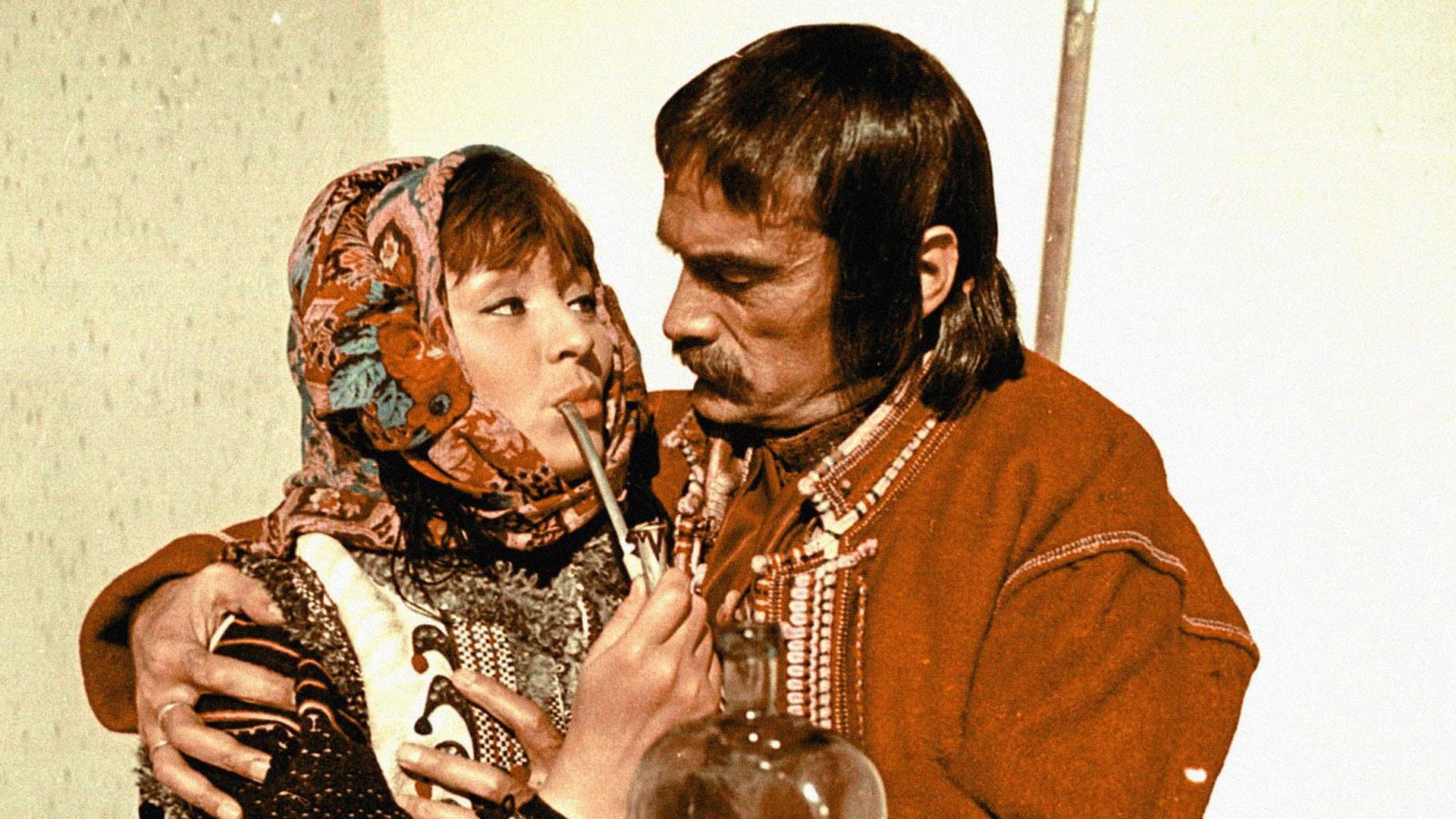
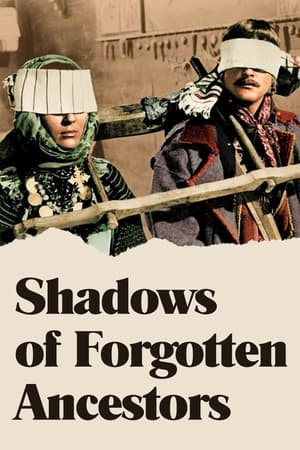
Shadows of Forgotten Ancestors
A New Kind of Ukrainian Film...acclaimed around the world at all film festivals
1965 • 1h 36min • ★ 7.6/10 • Soviet Union
Directed by: Sergei Parajanov
Cast: Ivan Mykolaichuk, Larysa Kadochnykova, Tatyana Bestayeva, Nikolay Grinko, Spartak Bagashvili
In the Carpathian Mountains of 19th-century Ukraine, love, hate, life and death among the Hutsul people are as they’ve been since time began. Ivan is drawn to Marichka, the beautiful young daughter of the man who killed his father. But fate tragically decrees that the two lovers will remain apart.
“Shadows of Forgotten Ancestors” is a Soviet-era Ukrainian film directed by Sergei Parajanov. The movie was released in 1965 and is based on the novel “The Hutsuls” by Ukrainian writer Ivan Franko.
The film is a visually stunning and poetic exploration of Ukrainian folklore and culture, following the story of a young man named Ivan, who falls in love with a woman from a neighboring village. The film explores themes of love, death, and rebirth, as well as the tension between traditional Ukrainian culture and the modern world.
“Shadows of Forgotten Ancestors” is renowned for its unique and innovative visual style, which incorporates traditional Ukrainian motifs and rituals, as well as Parajanov’s own artistic vision. The film is noted for its use of color, music, and symbolism to create a dreamlike and immersive experience for the viewer.
Despite facing censorship and criticism from Soviet authorities at the time of its release, “Shadows of Forgotten Ancestors” has since been recognized as a masterpiece of world cinema and an important contribution to Ukrainian cultural heritage. The film continues to be celebrated for its poetic and deeply personal vision of Ukrainian culture and society.
- Factory sealed DVD
- Nina Alisova, Tatyana Bestaeva, Nikolai Grinko (Actors)
- Sergei Paradjanov (Director)
- English, Spanish, French (Subtitles)
- English (Publication Language)
9. I Am Twenty (1965)
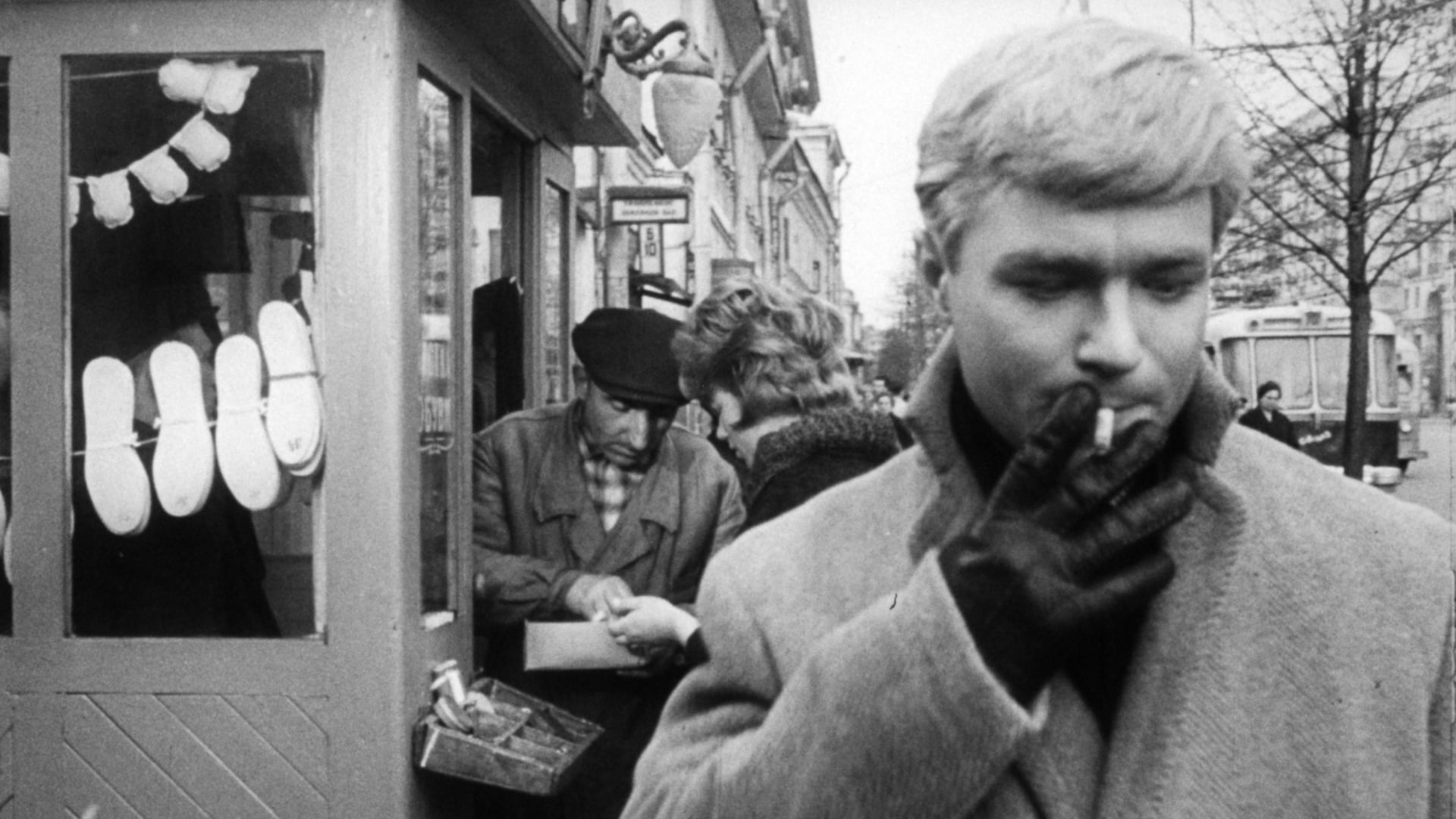
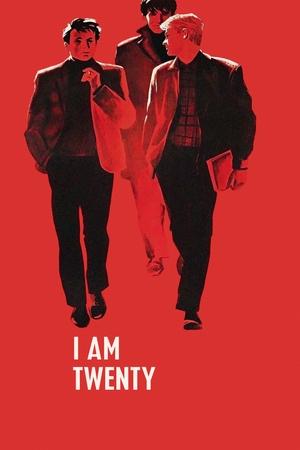
I Am Twenty
1965 • 2h 45min • ★ 7.146/10 • Soviet Union
Directed by: Marlen Khutsiyev
Cast: Valentin Popov, Nikolai Gubenko, Stanislav Lyubshin, Marianna Vertinskaya, Zinaida Zinovyeva
Having returned from the army, 20-year-old Sergei settles down at the thermal power station and merges into ordinary life. Every day he meets and spends time with childhood friends — the young family man Slava and the merry fellow Nikolai, and once at first sight he falls in love with a stranger on the bus. A lyrical story about a generation of young people entering adulthood, a reappraisal of values, life principles, traditions in culture and art.
“I Am Twenty” (also known as “Mne dvadtsat let”) is a Soviet drama film directed by Marlen Khutsiev and released in 1965. The movie tells the story of three young friends who are trying to find their place in Soviet society during the Khrushchev Thaw period of the mid-1960s.
The film explores themes of youth culture, political dissent, and the tension between tradition and modernity in Soviet society. It is known for its innovative editing techniques, which use quick cuts and juxtapositions to create a sense of urgency and spontaneity.
“I Am Twenty” was initially banned by Soviet authorities for its depictions of dissent and its critical portrayal of Soviet society. However, the film eventually became a cultural touchstone for a generation of Soviet youth and is now regarded as a classic of Soviet cinema. It is credited with influencing the New Wave movement in Soviet filmmaking and inspiring a new generation of filmmakers to explore new themes and styles.
10. Andrei Rublev (1966)
“Andrei Rublev” is a 1966 Soviet biographical historical drama film directed by Andrei Tarkovsky. The movie depicts the life of Andrei Rublev, a 15th-century Russian icon painter, who, despite his artistic talent, struggles to find meaning and inspiration in a world rife with chaos and violence. Through a series of vignettes, the movie explores themes of art, faith, power, and humanity.
The film is widely regarded as a masterpiece of Soviet cinema and has been acclaimed for its stunning visuals, complex storytelling, and philosophical depth. Tarkovsky’s use of long takes and immersive sound design creates an immersive viewing experience that allows the audience to fully engage with the characters and their struggles. The movie’s epic scope, coupled with its nuanced portrayal of historical events, has made it a favorite among cinephiles and critics alike.
“Andrei Rublev” was initially censored by Soviet authorities for its graphic violence and religious themes, but has since become a celebrated classic of Russian cinema. The movie’s influence can be seen in countless films that have followed in its wake, and its themes of artistic expression and creative freedom continue to resonate with audiences today. “Andrei Rublev” is a must-watch for fans of historical dramas, art films, and Russian cinema.
- Factory sealed DVD
- Anatoli Solonitsyn, Ivan Lapikov, Nikolai Grinko (Actors)
- Andrei Tarkovsky (Director) - Andrei Tarkovsky (Writer)
- English (Subtitle)
- English (Publication Language)
11. White Sun of the Desert (1970)
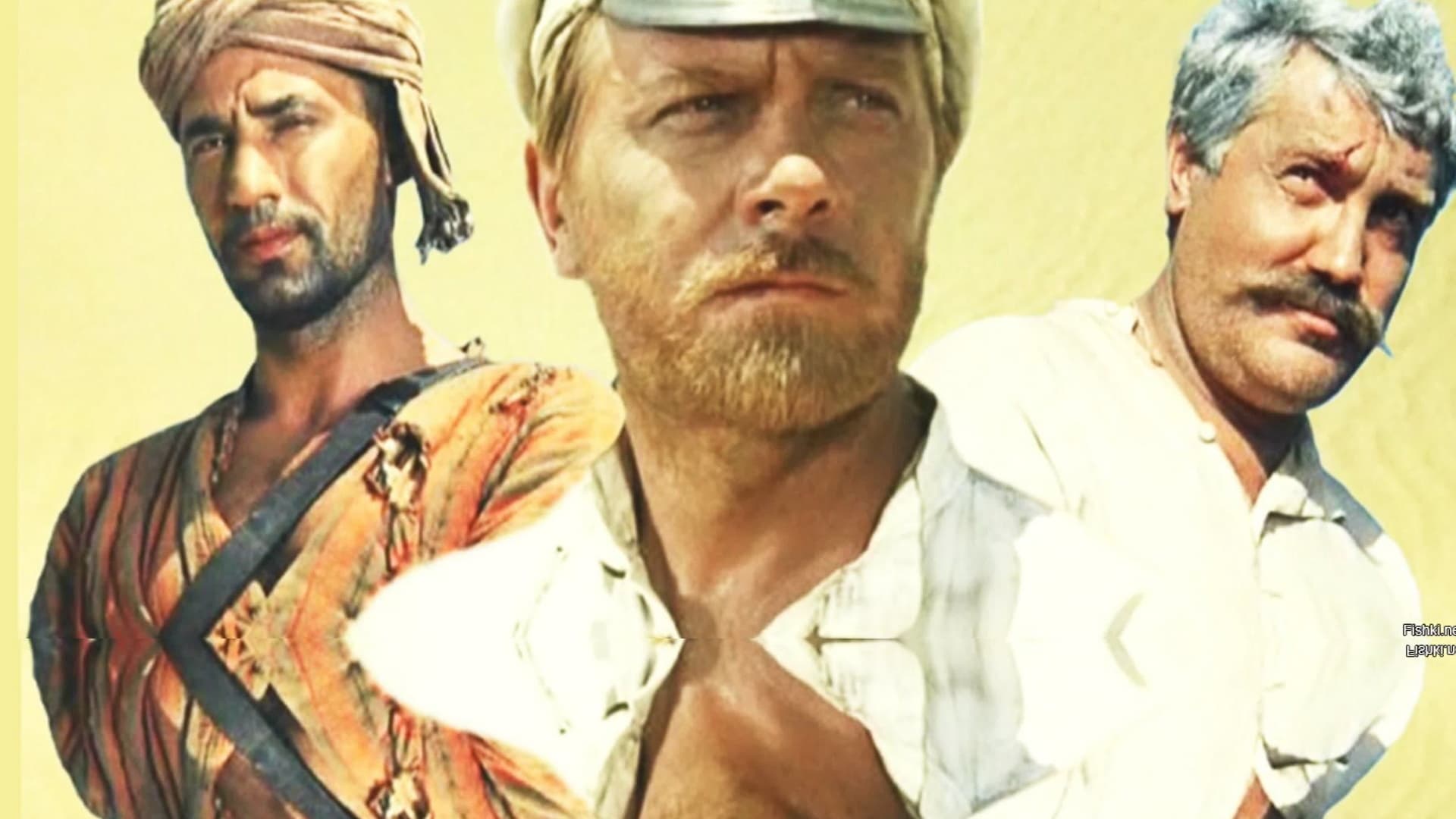
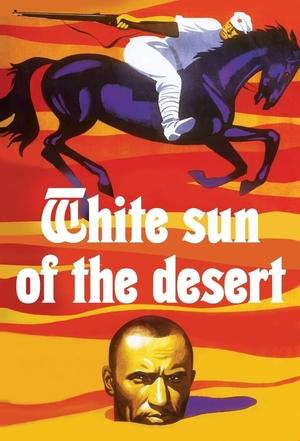
The White Sun of the Desert
1969 • 1h 23min • ★ 7.212/10 • Soviet Union
Directed by: Vladimir Motyl
Cast: Anatoliy Kuznetsov, Pavel Luspekayev, Spartak Mishulin, Kakhi Kavsadze, Raisa Kurkina
The setting is the east shore of the Caspian Sea (today's Turkmenistan) where the Red Army soldier Fyodor Sukhov has been fighting the Civil War in Russian Asia for a number of years. After being hospitalised and then demobbed, he sets off home to join his wife, only to be caught up in a desert fight between a Red Army cavalry unit and Basmachi guerrillas. The cavalry unit commander, Rahimov, "convinces" Sukhov to help, temporarily, with the protection of abandoned women of the Basmachi guerrilla leader Abdullah's harem. Leaving a young Red Army soldier, Petrukha, to assist Sukhov with the task, Rahimov and his cavalry unit set out to pursue fleeing Abdullah.Sukhov and women from Abdullah's harem return to a nearby shore town. Soon, looking for a seaway across the border, Abdullah and his gang come to the same town...
“White Sun of the Desert” is a Soviet-era film directed by Vladimir Motyl and released in 1970. The movie is widely regarded as a classic of Russian cinema and has become a cultural touchstone in the former Soviet Union.
The film tells the story of a Red Army soldier named Fyodor Sukhov, who is assigned to escort a harem of women across the desert during the Russian Civil War. Along the way, he encounters a variety of characters, including a band of Basmachi rebels, and must navigate dangerous terrain and political tensions.
The movie is notable for its mix of adventure, comedy, and political commentary. It features a diverse cast of characters, including Russians, Kazakhs, and Uzbeks, and highlights the complexity of relations between these different groups during the turbulent years of the Civil War.
The film’s visual style is also noteworthy, featuring stunning desert landscapes and a distinctive use of color that gives the movie a surreal and dreamlike quality. The score by composer Isaak Shvarts adds to the film’s emotional impact, with haunting melodies that capture the sense of longing and loss that permeates the story.
Overall, “White Sun of the Desert” is a masterpiece of Soviet cinema that continues to be beloved by audiences around the world. It is a testament to the power of film to capture the complexities of human experience and to transport viewers to far-off places and times.
- The White Sun of the Desert ( Beloe solntse pustyni )
- The White Sun of the Desert
- Beloe solntse pustyni
- Anatoli Kuznetsov, Spartak Mishulin, Kakhi Kavsadze (Actors)
- Vladimir Motyl (Director) - The White Sun of the Desert ( Beloe solntse pustyni ) (Producer)
12. King Lear (1970)
King Lear is a 1970 film adaptation of William Shakespeare’s play of the same name, directed by Peter Brook. The film stars Paul Scofield as King Lear, and features an ensemble cast of talented British actors.
The film follows the story of Lear, the aging king of Britain, who decides to divide his kingdom among his three daughters based on their declarations of love for him. However, when his youngest daughter Cordelia refuses to engage in flattery, Lear disowns her and sets in motion a series of tragic events that ultimately lead to his downfall.
The film is notable for its stripped-down, minimalist approach to Shakespeare’s text, with Brook focusing on the play’s psychological themes and the dynamics between the characters. The performances are powerful, particularly Scofield’s portrayal of Lear, which is widely regarded as one of the finest in the history of Shakespearean adaptations.
Overall, King Lear is a thought-provoking and emotionally resonant film that captures the timeless themes of Shakespeare’s play with sensitivity and depth. It remains a classic adaptation of one of the greatest plays in the English language.
13. Trial on the Road (1971)
“Trial on the Road” is a Soviet-era Russian film directed by Alexei German. The movie was released in 1971 and is based on a novel by German’s father, Yuri German.
The film is set during World War II and follows the story of a group of Soviet soldiers who are taken captive by the Germans and are forced to march through a snowy forest towards a prisoner of war camp. Along the way, the group encounters a variety of challenges and obstacles, including harsh weather conditions, hostile locals, and internal conflicts.
“Trial on the Road” is noted for its stark and realistic portrayal of war and its impact on individuals, as well as its focus on the moral and ethical choices faced by soldiers during times of conflict. The film is also celebrated for its innovative use of sound and image, as well as its powerful performances by its ensemble cast.
Despite facing censorship and criticism from Soviet authorities at the time of its release, “Trial on the Road” has since been recognized as a masterpiece of world cinema and an important contribution to the tradition of war films. The movie continues to be celebrated for its artistic and political significance, as well as its powerful and emotional portrayal of the human experience in times of war.
14. Mirror (1974)
“Mirror” (also known as “The Mirror” or “Zerkalo”) is a Soviet art film directed by Andrei Tarkovsky and released in 1974. The movie is a non-linear and highly personal reflection on Tarkovsky’s own life and the history of the Soviet Union.
The film is known for its dreamlike sequences, stunning cinematography, and intricate use of sound and music. It weaves together elements of poetry, autobiography, and history to create a deeply personal and emotionally resonant work.
“Mirror” was initially met with mixed reviews in the Soviet Union, where some critics found it overly abstract and self-indulgent. However, the film has since become widely regarded as one of Tarkovsky’s greatest works and a masterpiece of Soviet cinema. It has influenced numerous filmmakers and is often cited as one of the greatest art films ever made.
- Margarita Terekhova, Oleg Yankovsky, Filipp Yankovsky (Actors)
- Andrei Tarkovsky (Director)
- English (Subtitle)
- Audience Rating: NR (Not Rated)
15. The Ascent (1977)
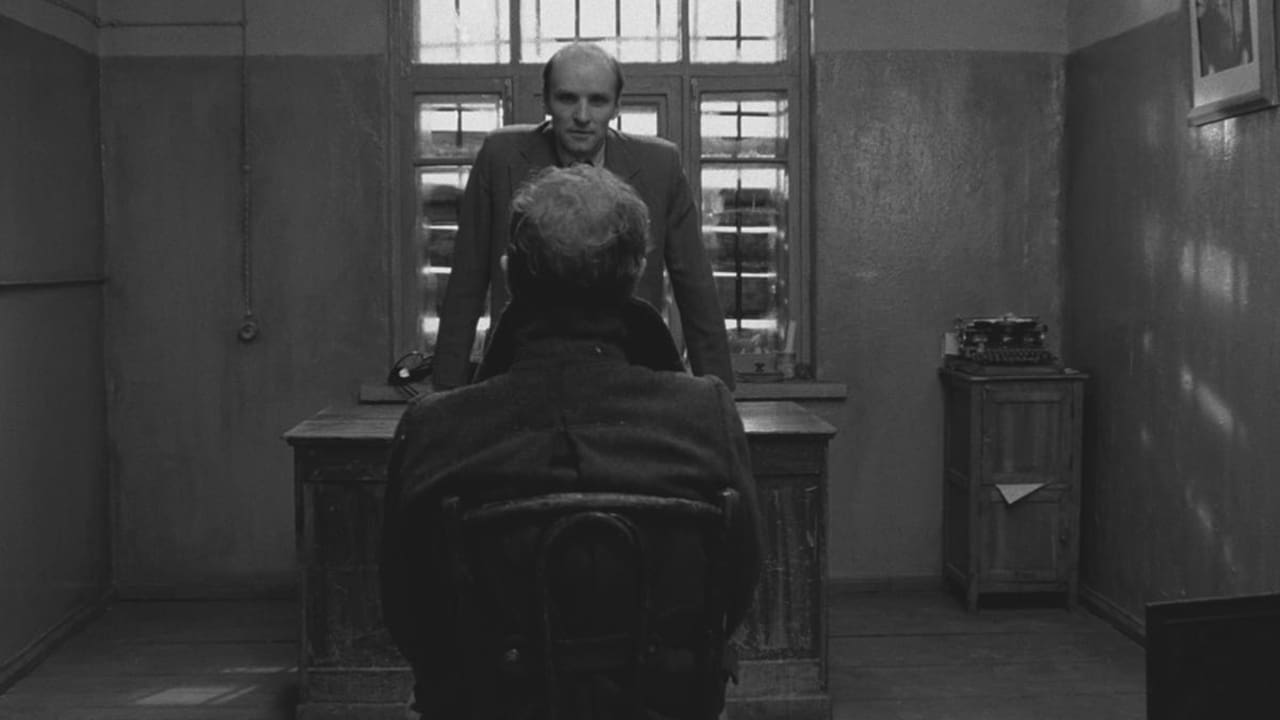
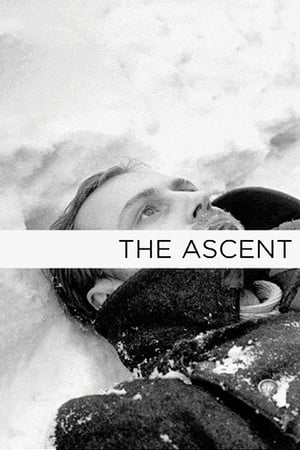
The Ascent
1977 • 1h 51min • ★ 7.837/10 • Soviet Union
Directed by: Larisa Shepitko
Cast: Boris Plotnikov, Vladimir Gostyukhin, Sergey Yakovlev, Lyudmila Polyakova, Viktoriya Goldentul
Two Soviet partisans leave their starving band to get supplies from a nearby farm. The Germans have reached the farm first, so the pair must go on a journey deep into occupied territory, a voyage that will also take them deep into their souls.
“The Ascent” is a 1977 Soviet war drama film directed by Larisa Shepitko. The movie takes place during World War II and follows two Soviet soldiers, Sotnikov and Rybak, who are captured by Nazi soldiers and accused of being partisans. As they are interrogated and tortured, they must confront their beliefs and make a difficult decision about their own survival.
The film is known for its powerful themes of sacrifice, morality, and the human cost of war. Shepitko’s use of stark black and white cinematography creates a haunting and visceral atmosphere that underscores the brutal realities of war. The movie’s complex characters and nuanced performances have made it a classic of Soviet cinema, and it has been celebrated for its powerful exploration of the human condition.
Despite being made over forty years ago, “The Ascent” remains a relevant and thought-provoking work of cinema that continues to resonate with audiences today. The movie’s unflinching portrayal of the brutality of war, combined with its deeply humanistic themes, make it a must-watch for fans of Russian cinema, war dramas, and thoughtful, character-driven films.
- The disk has English subtitles.
- English (Subtitle)
3 Characteristics of Russian Movies
Philosophical Depth: Russian movies are often characterized by a philosophical depth that explores complex themes such as human existence, morality, spirituality, and social justice. Russian cinema has a long tradition of exploring these issues in depth, and many of the country’s most celebrated films are renowned for their thought-provoking themes.
A Focus on Emotion: Russian movies often explore the emotional lives of their characters in great depth. These films frequently feature complex, multi-layered characters whose emotional struggles are at the heart of the story. The focus on emotion and character development has helped to create some of the most iconic characters in world cinema.
Visual Style: Russian movies are often distinguished by their visual style, which tends to be highly atmospheric, poetic, and often quite surreal. Many of the country’s most celebrated filmmakers, such as Andrei Tarkovsky and Sergei Eisenstein, are known for their highly stylized visual techniques that emphasize mood and atmosphere over straightforward storytelling. Russian movies are often characterized by their striking imagery, use of symbolism, and the creation of haunting, dreamlike worlds.
3 Reasons To Watch Russian Movies
Unique cinematic tradition: Russian cinema has a rich and diverse history, with a unique cinematic tradition that combines elements of realism, symbolism, and avant-garde experimentation. Russian films often deal with complex and profound themes, such as the human condition, social justice, and the relationship between the individual and the state.
Cultural insight: Watching Russian movies can provide a valuable insight into Russian culture, history, and society. Russian films often reflect the changing social and political landscape of the country, and offer a glimpse into the everyday lives and struggles of Russian people.
Acclaimed directors and actors: Russian cinema has produced some of the most acclaimed directors and actors in the world. Filmmakers such as Andrei Tarkovsky, Sergei Eisenstein, and Aleksei Balabanov, among others, have left a lasting legacy in the world of cinema, while actors such as Konstantin Khabensky, Milla Jovovich, and Chulpan Khamatova have gained international recognition for their performances.
Overall, watching Russian movies can provide a unique and rewarding cinematic experience, as well as a deeper understanding of Russian culture and society.
Best Russian Movies – Wrap Up
In summary, Russian cinema has a rich and diverse history that spans decades and encompasses a wide range of genres and styles. From classic Soviet-era propaganda films to cutting-edge contemporary dramas, Russian cinema has produced many important and influential works that have left a lasting impact on global cinema.
Some of the most well-known and beloved Russian films include the historical epic “War and Peace,” the psychological thriller “The Return,” and the science-fiction classic “Stalker.” Other notable works include the satirical comedy “Heart of a Dog,” the war drama “Come and See,” and the science-fiction epic “Hard to Be a God.”
Russian cinema has also produced many talented directors, actors, and writers who have made significant contributions to the art of filmmaking. Some of the most famous Russian filmmakers include Sergei Eisenstein, Andrei Tarkovsky, and Aleksei German.
Overall, Russian cinema remains an important and influential force in the world of filmmaking, and its rich history and diverse range of works continue to inspire and captivate audiences around the globe.






![Ballad of a Soldier (The Criterion Collection) [DVD]](https://m.media-amazon.com/images/I/31PC1bKSNsL.jpg)
![Hamlet - (Mr Bongo Films) (1964) [DVD]](https://m.media-amazon.com/images/I/51WD47YKCfL.jpg)




![White Sun of the Desert ( Beloe solntse pustyni ) [DVD]](https://m.media-amazon.com/images/I/51gI2oHeMTL.jpg)
![King Lear [Region 2]](https://m.media-amazon.com/images/I/51q1NkXQNQL.jpg)

![Aleksey German - 'Proverka Na Dorogakh / Trial on the Road' NTSC DVD with English Subtitles [World War II]](https://m.media-amazon.com/images/I/51Z1GeLUy9L.jpg)
![Mirror (The Criterion Collection) [Blu-ray]](https://m.media-amazon.com/images/I/51Df3KQ2nrL.jpg)
![The Ascent (1977) (Criterion Collection) UK Only [Blu-ray] [2020]](https://m.media-amazon.com/images/I/41aHzv12uqL.jpg)
